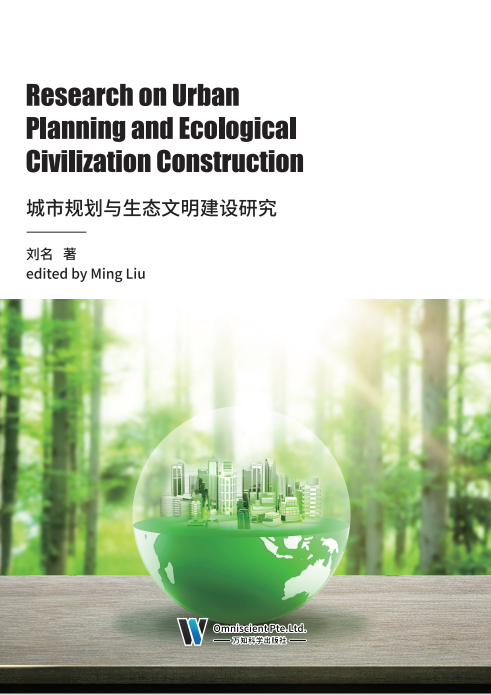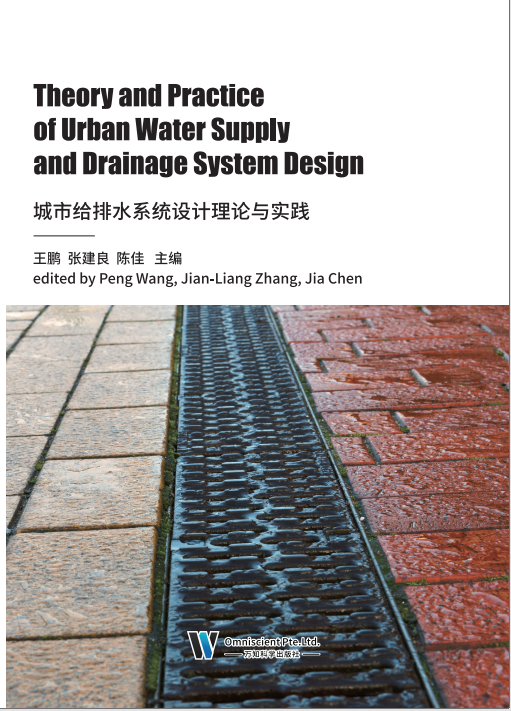
随着经济发展与时代进步,现代人们工作和生活质量得到了提高,但同时交通拥堵问题也越来越严重。城市轨道交通,采用独立路权,速度快,运量大,绿色环保,使城市环境及交通问题得到了缓解,已成为现代城市交通的重要组成部分。
城市轨道交通建设的不断发展,使得相关建设单位以及施工也越发重视施工安全管理,其可以为后续工作的开展提供良好的保障作用。为了确保城市轨道交通施工项目的顺利发展,相应的城市轨道交通建设单位以及施工单位还需要对施工安全管理加以重视,只有提高安全管理水平,才可以为后续的作业奠定良好的基础。
本书主要对城市轨道交通施工技术与安全管理进行研究探讨。各个城市地形条件和环境不同,对城市轨道交通的要求也不同。成功的技术及施工管理经验,要借鉴。同时,还要具体问题具体分析,根据自身的特点,编制切实可行的安全管理方法,并严格落实,根据需要及时调整,不断完善,为人们建造一个质量可靠、安全舒适的城市轨道交通。

当前,城市化进程不断加快,人们越来越重视城市规划。突出城市人文特色,实现自然与人文的有效结合,将园林景观设计作为城市规划的重要组成部分,在城市规划中注重自然景观的融入和设计,以促进城市人文发展。
随着城市化进程的加快,园林绿化的应用对于城市的发展有着重大的现实意义。从表面上来看,这座城市的规划是一项非常重要的工作,它可以帮助城市的发展,在一定的时期内,它会根据自己的发展趋势,制定出相应的规范,从而达到一定的效果。首先,可以说是一种具有美感和艺术性的天然风景,能够给人带来积极乐观、愉悦的视觉和心理感受;其次,与自然和谐、维持生态平衡、为居民提供自由、和谐、新鲜的居住环境;同时,相关部门也进行了大量的科研与试验,认为植物对人体的生理、心理都有巨大的好处,因此,在规划中应坚持生态均衡、净化环境、以人为本、防止环境污染的原则。
城市园林景观规划设计对于突出城市品牌形象、打造生态宜居的城市环境具有重要作用,其担负着休闲娱乐、生态健康等功能。因此,对现代城市园林景观规划与设计的研究十分必要。本书围绕现代城市园林景观设计基础理论展开讨论,深入系统地分析了现代城市的园林景观规划设计基础理论及形式,同时采用运用理论与实践相结合的方法,对现代城市园林景观的植物景观设计、道路与广场的设计以及公园的规划设计等方面的内容进行了较为系统、全面的探讨,最后对城市园林植物的养护管理与病虫害治理技术进行了介绍,对现代城市园林景观的规划设计有一定的促进作用。本书适合现代城市园林景观设计与规划研究者使用。

城镇化是人类社会发展的必然趋势,也是现代文明进步的重要标志。多年来,中国的城镇化取得了快速进展,但也带来了一系列严重的环境资源问题。主要表现为城镇空间快速扩张造成的土地浪费严重、资源高消耗引发的环境压力巨大、城镇发展面临的生态压力日渐加大、各种环境污染危及公众健康。各种“城市病”的存在,使中国的城市发展与城镇化推进面临着严峻的挑战。
生态文明是人类迄今可以预期的新型文明形态,生态文明建设是一个需要持之以恒为之奋斗的大业,需要制度创新、科技创新和理论创新,需要吸收人类一切优秀文明成果。中国传统文化的“天人合一”“民胞物与”等体现人与自然和谐的思想是生态文明理论的重要源头。这些思想尽管带有某种朴素的直观和顿悟的性质,但都是人类生态文明智慧的一部分,被全世界学者和思想家所认同。生态文明是对可持续发展理念与实践的凝练与升华。在生态文明建设中,也要汲取西方发达国家在环境保护、资源利用以及生态修复等方面的科学理念、技术体系、管理方法和成功经验。同时,生态保护、环境治理、资源开发问题的空间地域性很强,因此,不同地域空间的生态文明建设实践需要认真参考借鉴,因地制宜地合理布局生产、生活、生态空间具有重要理论和实践意义。

从给排水和生态学的角度看,水的含义有:其一,两端开放,中间封闭,实际反映了用水单位与上下游之间的关系—— 在人类社会初期,它表示“河水—锅碗瓢盆—河水”,当代则应理解为水源、水厂、用户、污水厂和接纳水体之间用管路连接,是地球水圈里人为建造的循环旁路,应善始善终。其二,水的物质载体功能,空间上开放与封闭的交替出现,表明自来水携带着矿物质出厂必须进入管网封闭输送,以防污染物混入,而废水也必须经由管网封闭输送,以防污染物流出渗入地下水。这是市政工程的重要内容,也是生态系统物质循环的组成部分,尤其是城镇化推进和大型污水厂的建设,改变了碳、氮、硫、磷、金属等元素的循环路径,也在潜移默化地影响着地球生物圈,这是进行生态核算的科学理由和伦理学基础。其三,结构式代表了给排水过程中最常见的设施—— 明渠流和管流,其输送能力和波动范围依据设计手册。结构式两端的明渠中的水可以外溢(河段涨水),中间的管道可能充满水,这两种情况我们越来越经常看到,无论哪种情况,直接后果都是城区内涝,这其实就是在气候异常的背景下,城市观海乃至污水倒灌的水力学原因。其四,从文化层面看,这个结构式还暗含了中国园林的精髓,即水所代表的灵气。
我们今天遇到的所有环境污染问题,均源于产业生态与自然生态间的不协调。环保事业发展到今天,已经不仅限于治理达标,而要从生态角度对生产生活行为作出评估。因此,对市政工程各个环节不同物质的排放进行核算是有必要的,因为任何人为排放都会影响地球生物圈和水圈的运行。本书是一本关于城市给水排水新技术与市政工程生态研究的专著,首先对城市给水排水的技术进行介绍;其次对市政工程的生态进行分析,以期为读者提供参考。

随着城市化建设的加快,作为重要基础的给排水系统受到全面的关注,但从目前的给排水设计规划来看,虽然取得了一些进展和良好的发展趋势,但在实施中还存在许多不足,如在设计规划中的系统布置环节联系性差,导致给排水系统的功能无法发挥作用,限制了城市经济发展和建设结构优化,这就要求相关管理人员在进行城市规划过程中,必须将排水系统规划纳入整个城市建设管理工作中,并坚持问题导向,着力解决给排水设计中的问题,实施更加科学的措施,提高给排水系统整体设计水平,为城市经济和建设的健康发展奠定基础。
城市给排水必须满足居民的基本生活,虽然给排水工程是促进经济发展的基础,但其设计的出发点仍以住房为主,即给排水功能主要是为居民提供饮用水。在设计给排水过程中,不仅要保证城市给排水管路使用的耐久性,还要保证居民用水的连续性和安全性,同时在建设过程中,还不应干扰居民生活。
城市给排水系统作为经济发展的基础发挥着重要作用,只有对给排水系统进行科学的规划,才能发挥系统的社会实用价值,促进城市的发展。同时随着城市化进程的发展,越来越多的地区走上了改革道路。城市的建设规模和人口逐步增加和扩大,这也给供水和污水系统的规划设计带来挑战,在这种背景下,本书阐述对城市给排水系统设计理论与实践,分析设计过程中出现的问题,并提出了相关的优化方案,以期促进我国城市给排水设计和规划质量。